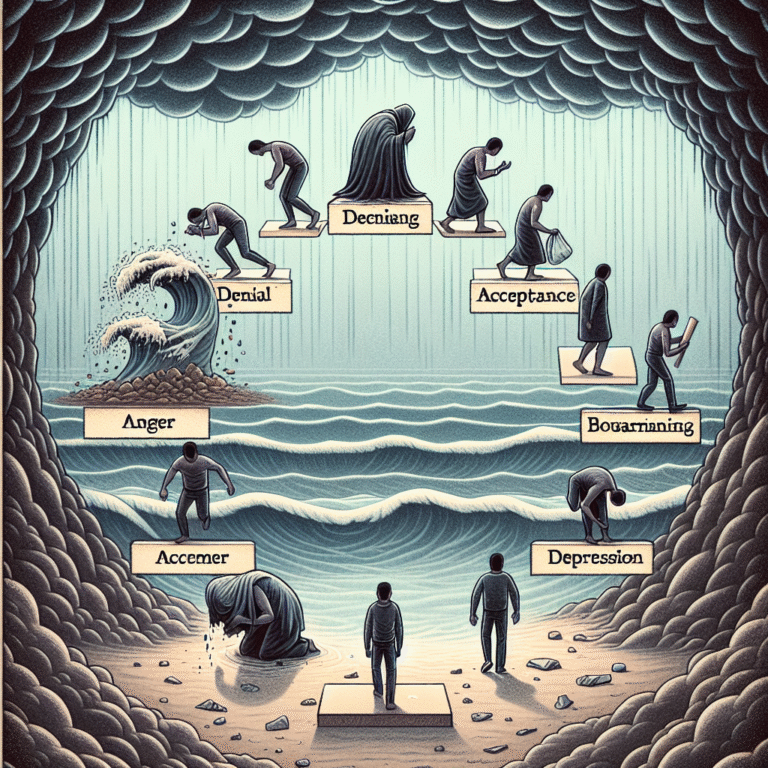
Beginner’s Guide to Mindfulness: Essential Techniques for Stress Relief
Introduction: The Modern Need for Mindfulness
In today’s fast-paced world, stress has become an inevitable part of life. From work pressures and personal responsibilities to the endless stream of information thanks to technology, many find themselves overwhelmed and anxious. The solution? Mindfulness. In this Beginner’s Guide to Mindfulness: Essential Techniques for Stress Relief, we will explore how simple mindfulness practices can dramatically improve mental well-being, enhance focus, and reduce stress levels.
Imagine walking through a serene forest, every sense heightened; the rustle of leaves whispers wisdom, the fragrance of pine fills the air, and the calmness envelops you. That’s the feeling mindfulness aims to replicate in our chaotic lives. Whether you are completely new to mindfulness or just looking to refine your practice, this guide will equip you with essential and easily applicable techniques for stress relief.
What is Mindfulness?
At its core, mindfulness is the practice of being present in the moment, fully engaging with your current experience without judgment. Developed from ancient Buddhist practices, mindfulness has been embraced worldwide as a tool for emotional regulation, enhancement of personal awareness, and a pathway to a more fulfilling life.
The Science Behind Mindfulness
Research shows that practicing mindfulness can change the structure of the brain, effectively reducing anxiety and depression levels. Studies reveal that mindfulness meditation activates the prefrontal cortex, the area responsible for rational thinking, decision making, and emotional regulation.
Table 1: Benefits of Mindfulness
| Benefit | Description |
|---|---|
| Reduces stress | Lowers cortisol levels and promotes relaxation. |
| Enhances focus | Improves attention span and concentration. |
| Promotes emotional health | Helps in managing anxiety, anger, and mood swings. |
Simple Techniques for Stress Relief
As part of our Beginner’s Guide to Mindfulness: Simple Techniques for Stress Relief, the following techniques can be easily integrated into your daily routine.
1. Mindful Breathing
Mindful breathing is one of the fundamental practices in mindfulness. It requires minimal effort and can be done anywhere.
How to Practice:
- Find a Quiet Space: Sit or stand comfortably.
- Close Your Eyes: If it feels comfortable, close your eyes to minimize distractions.
- Focus on Your Breath: Inhale deeply through your nose, allowing your abdomen to rise. Exhale slowly through your mouth.
- Count Your Breaths: Count each inhale and exhale until you reach ten. Then, start over.
Case Study: Sarah’s Transformation
Sarah, a busy marketing manager, struggled with anxiety that often disrupted her work. By incorporating mindful breathing for ten minutes each morning, she noticed an improvement in her focus and a reduction in her stress levels. This simple technique became her go-to strategy during overwhelming situations.
2. Body Scan Meditation
The body scan is a form of mindfulness meditation that allows you to connect with your body’s physical sensations, promoting awareness and relaxation.
How to Practice:
- Find a Comfortable Position: Lie down or sit comfortably.
- Focus on Each Body Part: Starting from your toes, gradually move your attention upwards. Notice any sensations, tension, or discomfort.
- Breathe Into Areas of Tension: As you notice tension, visualize breathing into that area, helping it soften and relax.
Analysis of Case Study: Tom’s Journey
Tom, who faced chronic back pain, discovered the body scan. With daily practice, he learned to recognize tension signals and release discomfort. Over time, mindfulness not only helped manage his pain but also reduced his overall stress levels.
3. Mindful Walking
Mindful walking shifts the focus from traditional meditation to movement. It can be practiced indoors or outdoors.
How to Practice:
- Choose Your Path: Select a space that allows you to walk freely, whether it’s indoors or outside.
- Notice Your Steps: Pay attention to how your feet feel as they touch the ground. Notice the sensations in your legs and the rhythm of your breath.
- Observe Your Surroundings: Engage your senses. Notice the colors, sounds, and smells around you.
4. Journaling for Mindfulness
Writing can be a powerful mindfulness tool, allowing you to process thoughts and emotions.
How to Practice:
- Set Aside Time: Dedicate time each day to write, whether it’s in the morning or before bed.
- Free Write: Let your thoughts flow freely without worrying about grammar or structure. Focus on how you feel.
- Reflect on Your Day: Write down moments that brought you joy or stress, reflecting on why you felt that way.
The Benefits of Journaling
| Benefits | Description |
|---|---|
| Enhances self-awareness | Connects emotions to thoughts and actions. |
| Reduces anxiety | Provides an outlet for stress alleviation. |
| Encourages positivity | Helps in identifying positive experiences. |
Tips for Integrating Mindfulness into Daily Life
The essence of this Beginner’s Guide to Mindfulness: Simple Techniques for Stress Relief lies in making mindfulness a habitual practice. Here are some tips:
1. Schedule Mindfulness Moments
Set aside specific times in your day for mindfulness practices. Whether during your morning routine or lunch break, consistency is key.
2. Use Mindfulness Apps
Numerous mindfulness apps, like Headspace and Calm, offer guided meditations and techniques, making it easier to stay on track.
3. Find a Mindfulness Group
Joining a group can provide community support, encouragement, and accountability for maintaining your practice.
4. Practice Gratitude
End your day by reflecting on three things you are grateful for. This practice shifts focus from negativity to appreciation.
Conclusion: Your Journey Begins Here
Embracing mindfulness can transform your relationship with stress, leading to a more fulfilling and balanced life. By integrating the techniques outlined in this Beginner’s Guide to Mindfulness: Simple Techniques for Stress Relief, you can begin your journey toward greater self-awareness and emotional well-being.
As you embark on this path, remember that mindfulness is a practice; progress is not always linear, and that’s perfectly okay. Start small, be kind to yourself, and gradually incorporate these practices into your daily rituals. The rewards—less stress, improved focus, and emotional resilience—are well worth the efforts. Let each mindful moment guide you toward a more serene and joyful life.
FAQs
1. What is the best time to practice mindfulness?
The best time varies per individual. Some find mornings effective for setting intentions, while others may prefer evenings for reflecting on their day. Find what works best for you.
2. How long should I practice mindfulness for it to be effective?
Starting with just 5-10 minutes a day can be beneficial. As you feel more comfortable, gradually increase the duration.
3. Do I need to meditate to practice mindfulness?
While meditation is a common mindfulness practice, mindfulness can also be practiced through everyday activities like mindful eating, walking, or deep breathing.
4. Can mindfulness help with chronic stress?
Yes, studies have indicated that mindfulness practices can significantly reduce symptoms of chronic stress, helping to improve emotional regulation and overall well-being.
5. How can I stay motivated to continue mindfulness practices?
Track your progress in a journal, join mindfulness groups, and set specific goals to create community enthusiasm and maintain motivation.
By incorporating these strategies and maintaining an open mind towards learning and growth, you can cultivate a mindful lifestyle that effectively combats stress and enhances your overall quality of life. Welcome to your journey towards mindfulness!











